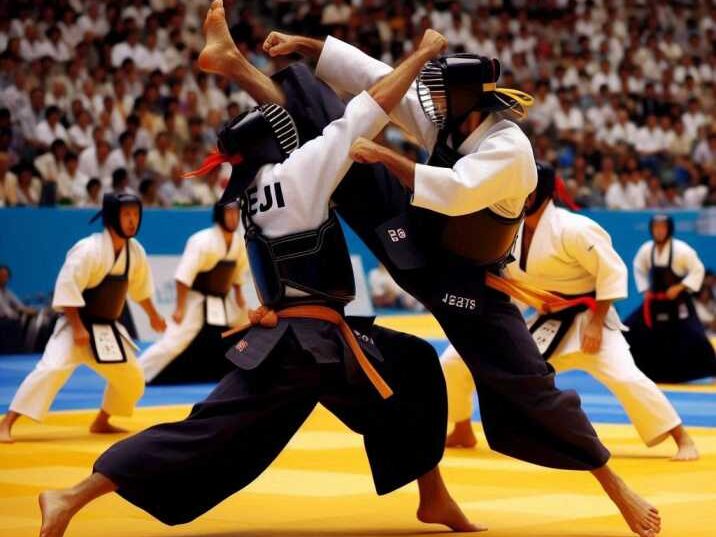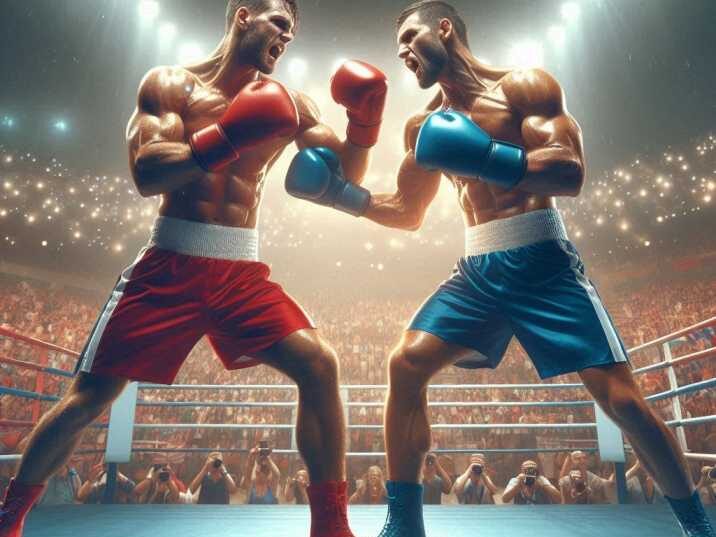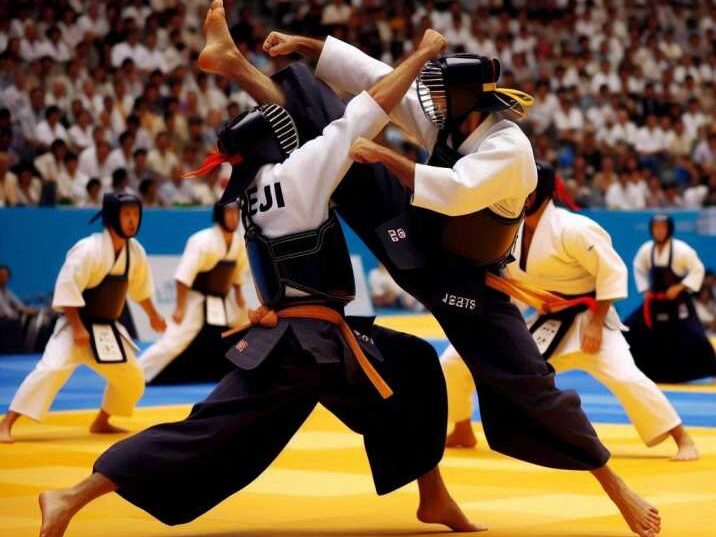Introduction
Table of Contents
The Olympics is one of the most exciting sports events in the world! Athletes from all over the globe come together to compete in various sports. But did you know that the Olympics also feature some of the coolest martial arts? These are sports that involve a lot of skill, concentration, and discipline. In this article, we’ll explore how many martial arts are in the Olympics, what they are, and why they are so popular. We’ll also learn about how these sports can help improve focus and discipline, which is great for doing well in school and other activities. Let’s dive in!
What Are Olympic Martial Arts?
Martial arts are combat sports that involve techniques for self-defense, physical fitness, and mental discipline. In the Olympics, martial arts are competitive sports where athletes perform in front of judges or fight against opponents to score points. Each martial art has its unique rules and styles, making them exciting to watch and even more thrilling to participate in.
How Many Martial Arts Are in the Olympics?
There are currently four Olympic martial arts: Judo, Taekwondo, Karate, and Boxing. Each of these sports has a rich history and a unique way of competing. Let’s explore each one!
1. Judo
Judo is a martial art that originated in Japan and is widely practiced worldwide. The term “Judo” translates to “gentle way,” emphasizing the use of technique over brute strength. Instead of relying on strikes or kicks, Judo practitioners use their opponent’s force and balance against them. This approach makes it possible to overcome a stronger opponent with skill and strategy.

- Focus on Throws and Grappling:
In Judo, the main techniques involve throwing an opponent onto the ground. Practitioners learn various types of throws, such as hip throws and shoulder throws, to effectively off-balance their opponents and bring them down with force. Grappling techniques, including joint locks and pins, are also essential parts of Judo, allowing athletes to control their opponents once they are on the ground. - Joint Locks and Chokeholds:
Judo also incorporates joint locks, where the practitioner manipulates the opponent’s arm or leg joints to immobilize them or force them to submit. Chokeholds are techniques used to restrict the opponent’s air supply or blood flow, leading to a submission. However, these techniques require a high level of skill and control to be executed safely. - Building Strength, Flexibility, and Concentration:
Judo training helps athletes develop physical strength and flexibility, as the sport requires a lot of lifting, pulling, and dynamic movements. It also enhances mental concentration because practitioners must constantly read their opponents’ intentions and react swiftly. This focus on both the mind and body makes Judo a comprehensive sport that benefits overall development. - Using the Opponent’s Strength Against Them:
One of the unique aspects of Judo is its philosophy of using an opponent’s force against them. For example, when an opponent tries to push or pull, a skilled Judoka (Judo practitioner) will use that momentum to execute a throw or takedown. This principle is why Judo is often called the “gentle way”—it is less about direct confrontation and more about redirecting the opponent’s energy.
2. Taekwondo
Taekwondo is a dynamic Korean martial art that emphasizes powerful, high-speed kicking techniques. The name “Taekwondo” means “the way of the foot and hand,” highlighting the importance of both kicking and punching in this martial art. It is known for its spectacular kicks, which are both fast and high, requiring a great deal of flexibility and agility.
Learning Self-Discipline and Respect:
Taekwondo is not just about physical ability; it is also deeply rooted in discipline and respect. Practitioners are taught to show respect to their instructors, fellow students, and even their opponents. The training environment encourages self-discipline, as students must practice diligently, follow rules, and show dedication to their craft. This mindset fosters a sense of respect for oneself and others, which is valuable both inside and outside the training hall.
Focus on High, Fast Kicks and Dynamic Spinning Kicks:
Taekwondo is particularly famous for its high and spinning kicks. These kicks are not only visually impressive but also strategically advantageous because they can reach an opponent’s head or upper body, scoring higher points in competitions. The spinning kicks, such as the spinning hook kick or back kick, combine speed and surprise, making them difficult to defend against.
Scoring Points in Competitions:
In Taekwondo matches, athletes earn points by landing precise kicks and punches on their opponent’s torso and head. The scoring system rewards clean, controlled techniques that make contact with the designated scoring areas. Higher points are awarded for more difficult techniques, such as spinning or jumping kicks to the head, which require both skill and courage to execute successfully.
Improving Flexibility, Balance, and Coordination:
The practice of Taekwondo is excellent for developing physical attributes such as flexibility, balance, and coordination. Since many techniques require high kicks and quick changes in direction, practitioners must develop a strong core and flexible legs. Additionally, maintaining balance during fast-paced sparring matches helps improve overall coordination and agility.
3. Karate
Karate is a Japanese martial art that focuses on striking techniques using the hands and feet. The word “karate” means “empty hand,” highlighting that practitioners (called karatekas) do not use weapons but rely on their body’s power to execute techniques. Karate emphasizes a combination of punches, kicks, and open-hand strikes, making it a versatile and effective form of self-defense and sport.
- Combination of Punches, Kicks, and Open-Hand Strikes:
Karate involves a variety of striking techniques, including punches, kicks, and open-hand strikes (like knife-hand chops). These techniques are executed with speed, power, and precision, targeting an opponent’s vital areas to incapacitate or neutralize them. The art requires a great deal of control and skill to perform these techniques safely and effectively, especially in competition settings. - Inclusion in the Olympics:
Karate made its Olympic debut in the 2021 Tokyo Games. This inclusion marked a significant milestone for the martial art, bringing it into the global spotlight. Karate’s Olympic events provide a platform for athletes worldwide to showcase their skills and the martial art’s rich cultural heritage. - Key Skills: Striking, Blocking, and Kata:
Karate practitioners learn various techniques for striking, such as straight punches (tsuki), kicks (geri), and blocks (uke) to defend against attacks. Kata is a vital aspect of Karate training—these are choreographed patterns of movements that simulate fighting against multiple opponents. Kata helps practitioners refine their techniques, improve their balance, and develop mental focus and discipline. - Emphasis on Self-Control, Discipline, and Respect:
Karate is not just about physical strength; it also deeply emphasizes mental focus, self-control, discipline, and respect for others. Karatekas are taught to control their emotions and reactions, maintain a disciplined training routine, and show respect to their instructors, peers, and opponents. These values are considered just as important as physical prowess in Karate.
Karate Events in the Olympics
There are two main types of Karate events in the Olympics:
- Kumite:
Kumite is a sparring event where two athletes compete against each other. The goal is to score points by landing clean, controlled strikes to specific target areas on the opponent’s body. Kumite matches require quick reflexes, strategic thinking, and the ability to read the opponent’s movements. This event showcases the combat aspect of Karate, focusing on technique, timing, and precision. - Kata:
Kata is a solo event where athletes perform a series of predefined movements. These movements are designed to demonstrate a wide range of Karate techniques, including strikes, kicks, blocks, and stances. Kata is judged on factors such as strength, speed, rhythm, balance, and the accuracy of the movements. It highlights the artistry and technical skill of Karate, providing a different perspective on the martial art beyond direct combat.
4. Boxing
Boxing is a combat sport that involves two athletes fighting each other using their fists. It is one of the oldest and most popular Olympic sports, with a rich history that dates back to Ancient Greece. Modern boxing, however, follows rules developed in England and has become a refined and regulated sport. In Olympic boxing, fighters, called boxers, use padded gloves to strike their opponents, aiming to score points by landing punches on the upper body or head.

Mental Toughness and Quick Decision-Making:
Boxing demands a high level of mental toughness. Boxers must remain focused, adapt to their opponent’s tactics, and stay composed under pressure. Quick decision-making is essential, as boxers have only a split second to decide whether to attack, defend, or counter based on their opponent’s actions. This sharpens cognitive skills, making boxing not only a test of physical ability but also mental acuity.
Use of Fists to Score Points:
Boxing is a striking sport that strictly uses punches. Boxers aim to score points by landing clean, effective punches on their opponent’s upper body and head. Each punch must be delivered with precision, and points are awarded based on the accuracy, force, and technique of the strike. The scoring system in Olympic boxing emphasizes clean hits and penalizes illegal moves such as hitting below the belt or using the head.
Protective Gear and Safety:
To ensure safety, boxers wear protective gloves to cushion their fists and protect their hands during a match. Additionally, they often wear mouthguards and headgear to reduce the risk of injury, particularly in amateur and youth divisions. This protective gear is crucial in a sport that involves direct strikes to the body and head, helping to prevent severe injuries.
Key Skills: Punching, Defense, Footwork, and Stamina:
Punching is the fundamental skill in boxing, and boxers must master various punches, such as jabs, hooks, uppercuts, and crosses. Defense is equally important, with techniques like dodging, blocking, and parrying to avoid getting hit. Footwork is critical in boxing, allowing boxers to move quickly around the ring, maintain balance, and position themselves strategically. Stamina and endurance are also vital, as boxing matches can be physically demanding, requiring athletes to maintain a high level of performance throughout multiple rounds.
Building Strength, Endurance, and Strategic Thinking:
Boxing is excellent for developing strength, particularly in the upper body, as well as endurance due to the continuous movement and high intensity of the sport. Boxers must also develop strategic thinking to anticipate their opponent’s moves and devise effective counterattacks. The mental aspect of boxing is as crucial as the physical, requiring quick decision-making, focus, and resilience to endure the challenges of a fight.
How Do Olympic Martial Arts Benefit Children?
Practicing Olympic martial arts isn’t just about learning how to defend oneself. It also helps improve focus, discipline, and confidence. Training requires concentration and discipline, which can translate to improved focus in school and other activities. When children practice these sports, they learn the value of hard work, patience, and respect for others. These are important life skills that help them in many areas, such as doing well in their studies and making good decisions in life.
Table of Information: Olympic Martial Arts Overview
| Martial Art | Origin | Olympic Debut | Key Skills | Main Focus |
|---|---|---|---|---|
| Judo | Japan | 1964 | Throws, grappling, joint locks, chokeholds | Technique and control |
| Taekwondo | Korea | 2000 | Kicking, punching, blocking | Speed and agility |
| Karate | Japan | 2021 | Striking, blocking, kata | Discipline and focus |
| Boxing | Ancient Greece | 1904 | Punching, defense, footwork, stamina | Power and strategy |
Conclusion
The Olympic martial arts are a fantastic mix of tradition, discipline, and excitement. With four unique sports—Judo, Taekwondo, Karate, and Boxing—there’s something for everyone to enjoy. These sports not only provide a fun way to stay active but also help develop important life skills like focus, discipline, and respect. Whether you’re looking to learn a new skill, make new friends, or just have fun, Olympic martial arts are a great way to do it!
5 FAQs About Olympic Martial Arts
- How many martial arts are in the Olympics?
There are four Olympic martial arts: Judo, Taekwondo, Karate, and Boxing. - When was Judo first included in the Olympics?
Judo was first included in the Olympics in 1964. - What is the main focus of Taekwondo?
The main focus of Taekwondo is on kicking, punching, and blocking techniques. - Which Olympic martial art focuses on striking and blocking?
Karate focuses on striking, blocking, and kata (a form of movement). - Why is boxing considered one of the oldest Olympic sports?
Boxing is considered one of the oldest Olympic sports because it has been included since 1904.



